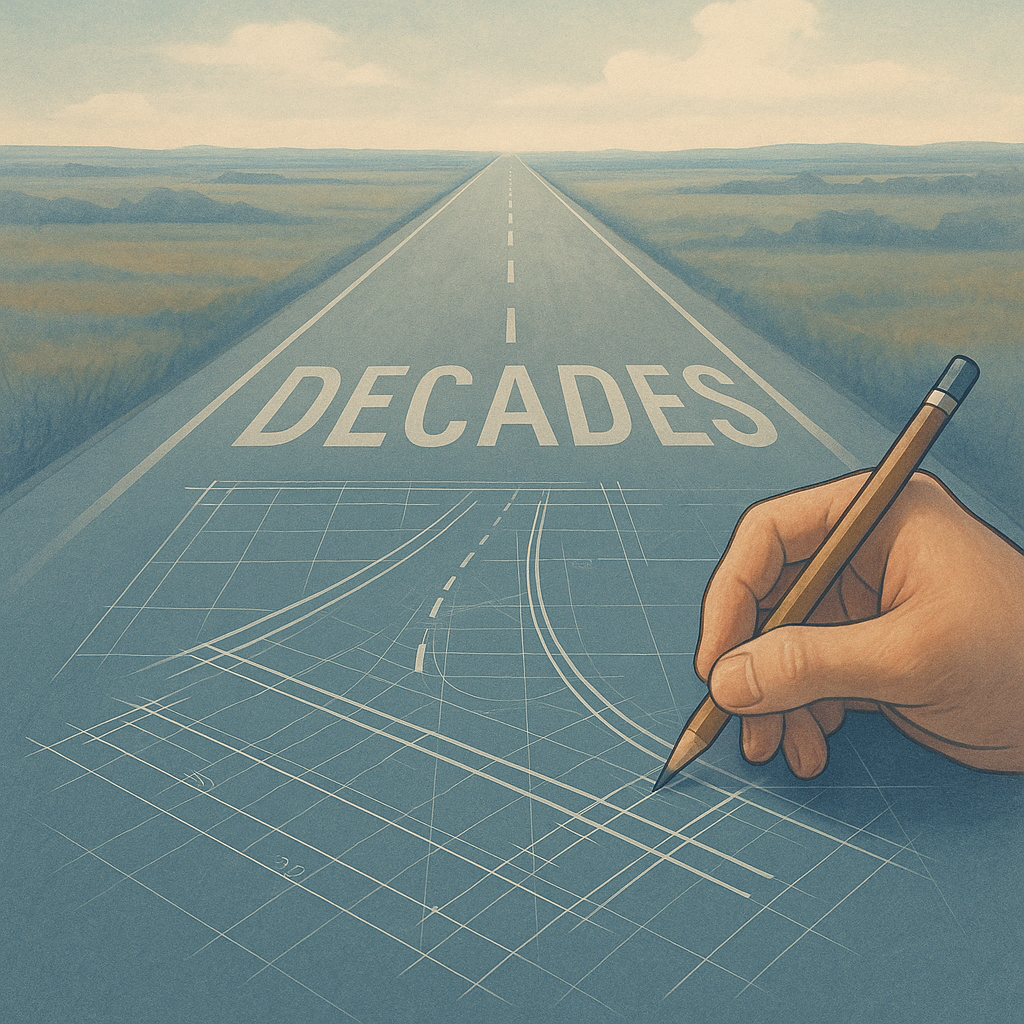
Table of Contents
The quiet of a Sunday morning presents a unique professional paradox. It’s a time for expansive, long-term thinking about our careers, yet the tactical chaos of the coming Monday looms, demanding immediate attention. How do we reconcile the grand vision with the urgent, relentless demands of the week ahead?
After nearly three decades of navigating the enterprise technology landscape, I’ve found that the most resilient careers are built on two distinct but connected time horizons: the decade and the week. Thinking in decades sets the direction; planning in weeks provides the steering.
The Decade View: Strategic North Star
The long view (the decade perspective) isn’t about predicting specific technologies or market conditions with precision. That’s a fool’s errand in our rapidly evolving field. Instead, it’s about identifying the durable skills and fundamental shifts in how work gets done. It’s about asking deeper questions: “What will be true about the relationship between data, finance, and business operations in ten years?” or “Which human capabilities will remain irreplaceable despite advancing automation?”
This perspective helps you differentiate between fleeting trends and foundational changes, preventing the exhausting chase after every new, shiny technology. It becomes the strategic layer of your professional life, anchoring decisions in something more substantial than quarterly earnings reports or the latest industry hype cycle.
Longitudinal data from complex system deployments reveals a consistent pattern: professionals who thrive long-term aren’t necessarily the ones who adapt fastest to every change. They’re the ones who recognize which changes represent genuine inflection points versus surface-level noise.
The Weekly Bridge: Tactical Execution
But here’s where most strategic planning falls apart: it remains purely conceptual. A grand strategy is useless without disciplined execution. This is where the weekly cadence, often planned during the reflective quiet of a Sunday, becomes the critical bridge between aspiration and reality.
The goal of this weekly planning session isn’t to create an exhaustive to-do list (that’s project management, not strategic thinking). It’s to consciously align your immediate actions with your long-term direction. I’ve found it helpful to treat this as a recurring governance meeting with myself, complete with a structured agenda and clear deliverables.
It’s a brief, focused moment to ask a few simple but powerful questions:
What one or two actions this week will move me closer to my long-term goals? This might not be the most urgent task on your list, but it should be among the most important. It could be learning a new analytical technique, strengthening a key professional relationship, or starting a difficult but necessary project that’s been languishing in your backlog.
What distraction or low-value task can I consciously sideline? Just as important as deciding what to do is deciding what not to do. Proactively identifying and deferring low-impact work creates the cognitive and temporal space needed for strategic action. This requires saying “no” to good opportunities in service of great ones.
The Architecture of Intentional Careers
Here’s what I’ve observed across countless career trajectories: the chaos of Monday morning is inevitable. Email will flood in, urgent requests will surface, and the day will quickly spiral into reactive mode. But this experience feels entirely different when you know your small, deliberate actions are part of a much larger, longer-term architecture you’re building for yourself.
Your career isn’t a series of random events or external circumstances happening to you. It’s a system. And you are the architect, the project manager, and the primary beneficiary of that system’s performance over time.
The professionals who navigate industry disruptions most effectively aren’t necessarily the smartest or most talented. They’re the ones who’ve built robust feedback loops between their long-term vision and their weekly execution. They’ve created what systems engineers would call “adaptive capacity” within their professional development process.
This dual-horizon approach requires discipline, but it’s not complicated. Think in decades to set your direction. Plan in weeks to maintain your momentum. The compound effect of this simple practice, sustained over time, becomes the foundation of a genuinely strategic career.
The Sunday morning quiet offers us this gift: a few moments to step back from the tactical urgency and remember that we’re building something larger than this week’s deliverables. Use it wisely.
For more thoughts on long-term strategy and career development, please connect with me on LinkedIn.